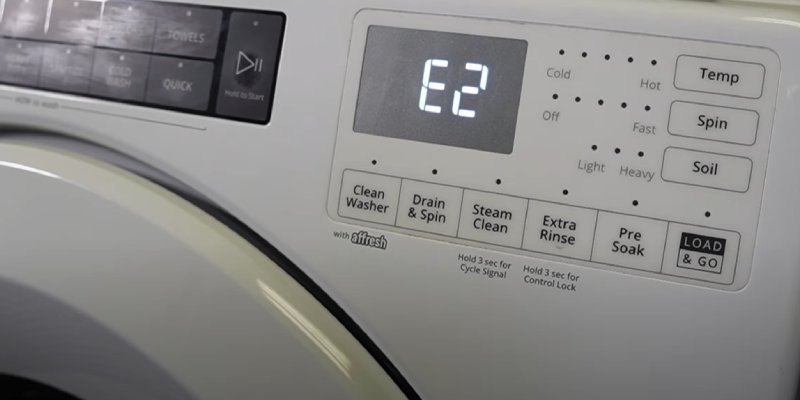
The OE error code typically stands for “drain error.” Essentially, your washer is having trouble getting rid of water. Think of it like trying to sip a milkshake through a clogged straw; the water in your machine just can’t flow out as it should. Ignoring this problem is akin to ignoring a leaky faucet – it may seem harmless at first, but over time, it can lead to bigger, more expensive issues. So, let’s dive into what you can do when you see this error, why it happens, and how to prevent it in the future.
Understanding the OE Error Code
So, what’s going on under the hood when the OE error code appears? Let’s picture your washing machine as a mini water management system. After washing your clothes, it needs to drain the dirty water before the spin cycle. If this system gets backed up, the machine can’t move on to the next cycle, which is why you see the OE code.
The most common culprit is a clogged drain hose or pump filter. Imagine your washing machine’s drain hose as a garden hose. If it’s pinched, kinked, or full of debris, water can’t flow freely, causing a backup. Similarly, the pump filter can accumulate lint, coins, and other small items that sneak past your pockets, acting like a net that’s caught too much fish.
Ignoring these signs is like ignoring a slow-draining sink. While your machine might still run, it’s working harder than it should and could eventually lead to a burnout. To tackle this issue, the first step is always to check the drain hose and pump filter for blockages. It’s a straightforward process that doesn’t require any special tools, just a bit of elbow grease.
Steps to Resolve the OE Error Code
Here’s how you can roll up your sleeves and fix this issue yourself. First, unplug your washer to ensure safety – water and electricity don’t mix well. Then, gently pull the machine away from the wall, so you can access the drain hose at the back. Now, imagine unclogging a vacuum cleaner hose; you might need to remove it and give it a good shake or rinse out any debris.
Once the hose is clear, it’s time to tackle the pump filter. This is usually situated at the bottom front of the washer. Pop the panel open and be ready with a shallow pan or towels, as water may trickle out. Remove and rinse the filter to make sure it’s free of any gunk. It’s a bit of a treasure hunt; you might even find that missing sock!
After everything’s cleaned and put back together, plug your machine back in and run a short cycle to test if the error has cleared. More often than not, this simple maintenance can save you a service call. But if the error persists, there might be a more complex issue at play, such as a faulty pump, which may need professional attention.
Consequences of Ignoring the OE Error Code
You might be tempted to just let the machine run its course, but ignoring the OE error is like skipping your car’s oil change – eventually, you could face more significant problems. A machine that can’t drain properly might overflow, causing water damage to your flooring or even the machine itself. Plus, the excess strain on the pump could lead to part failure, which isn’t something you want to deal with.
Long-term neglect might mean having to replace your washing machine earlier than expected. And let’s face it, nobody wants to shell out extra money for a new appliance when simple maintenance could have extended its lifespan. Regularly checking and cleaning the drain components not only resolves the OE error but also helps maintain the machine’s efficiency.
So, next time you see that pesky OE code, don’t ignore it. Take a few moments to address the issue and you’ll save yourself from potential headaches and costly repairs down the road. Prevention is always better than cure, and keeping an eye on your washing machine’s health is a surefire way to keep it running smoothly for years to come.